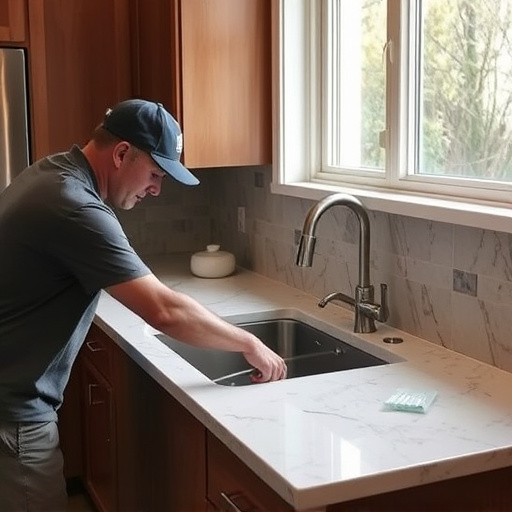Residential builders must prepare meticulously for post-construction inspections to uphold quality and safety standards. This includes a final walk-through with clients, verifying fixture and system functionality, maintaining clean properties, and organizing essential documentation like permits and warranties. Thorough inspection protects both the builder's reputation and the homeowner's investment, identifying issues early, fostering satisfaction, minimizing disputes, and enhancing credibility. Past project documentation offers valuable insights for future builds.
Post-construction inspections are a critical phase for residential builders, ensuring properties meet safety standards and customer expectations. This comprehensive guide offers essential tips to navigate the inspection process successfully. From preparing your projects to handling feedback, learn how to uphold professional standards and maintain client satisfaction. We’ll explore structural integrity checks, craftsmanship evaluation, code compliance, and effective communication strategies tailored for residential builders.
- Preparing for Post-Construction Inspections
- – Understanding the inspection process and its importance
- – Gathering necessary documents and records
Preparing for Post-Construction Inspections

Preparing for post-construction inspections is a crucial step for any residential builder, ensuring the highest quality and safety standards in newly built homes. Before the inspector arrives, builders should conduct a thorough final walk-through with their clients, pointing out all fixtures, appliances, and systems, and confirming they function as intended. This includes checking that the plumbing is running smoothly, electrical outlets are working, and any installed kitchen renovations or home improvement services meet the client’s expectations.
Additionally, builders should ensure that all necessary documentation is readily available, including building permits, material specifications, and manufacturer warranties. A clean and organized property will also facilitate the inspection process, allowing inspectors to easily access every corner of the home. By following these preparatory steps, residential builders can efficiently navigate post-construction inspections, demonstrating their commitment to excellence in craft and customer satisfaction.
– Understanding the inspection process and its importance

The post-construction inspection is a crucial step for any residential builder, as it ensures that the completed project meets all safety standards and quality expectations. It’s more than just a formality; it’s an opportunity to protect the builder’s reputation and the homeowner’s investment. For builders, understanding the inspection process involves recognizing various aspects of construction that require scrutiny, such as structural integrity, mechanical systems, and interior finishes. This includes meticulous checks for any defects or deviations from the initial blueprints, especially in areas like bathroom renovations or home additions, which can be particularly complex.
A thorough inspection not only identifies issues but also serves as a bridge between construction and home remodeling, ensuring that the final product is up to par. For residential builders, it’s about maintaining professionalism, minimizing disputes, and fostering client satisfaction. By paying close attention during these inspections, builders can mitigate future problems, enhance their work, and continue building a solid reputation in the industry, catering to clients’ needs for both new construction projects and home additions or renovations.
– Gathering necessary documents and records

Before conducting post-construction inspections, residential builders should ensure they have gathered all necessary documents and records related to the project. This includes building plans, permits, warranties, and any correspondence with subcontractors or suppliers. These documents are crucial for referencing during the inspection process and can help streamline potential issues or disputes that may arise. By having an organized record-keeping system in place, builders can efficiently navigate through each step of the inspection, ensuring every detail is accounted for.
Additionally, reviewing past projects and their respective documentation provides a valuable learning opportunity for residential builders. They can identify common issues, assess the effectiveness of specific construction methods or materials, and make informed decisions for future endeavors, including ongoing home improvement services or residential renovations, as well as new builds. This proactive approach not only enhances the quality of their work but also fosters client satisfaction and loyalty through transparent practices.
As a residential builder, navigating post-construction inspections is crucial for ensuring project quality and customer satisfaction. By understanding the inspection process, gathering essential documents, and adopting a proactive approach, builders can seamlessly guide their projects through this phase. These tips not only streamline the inspection process but also reinforce the reputation of skilled and reliable residential builders in the industry.














